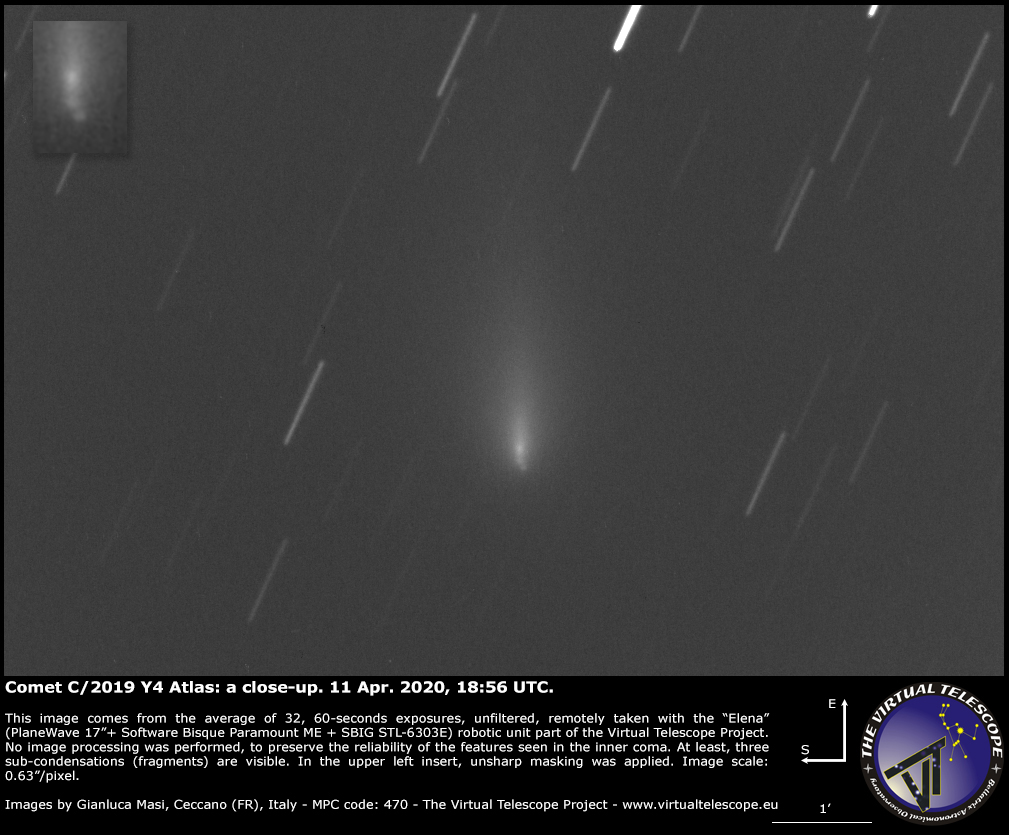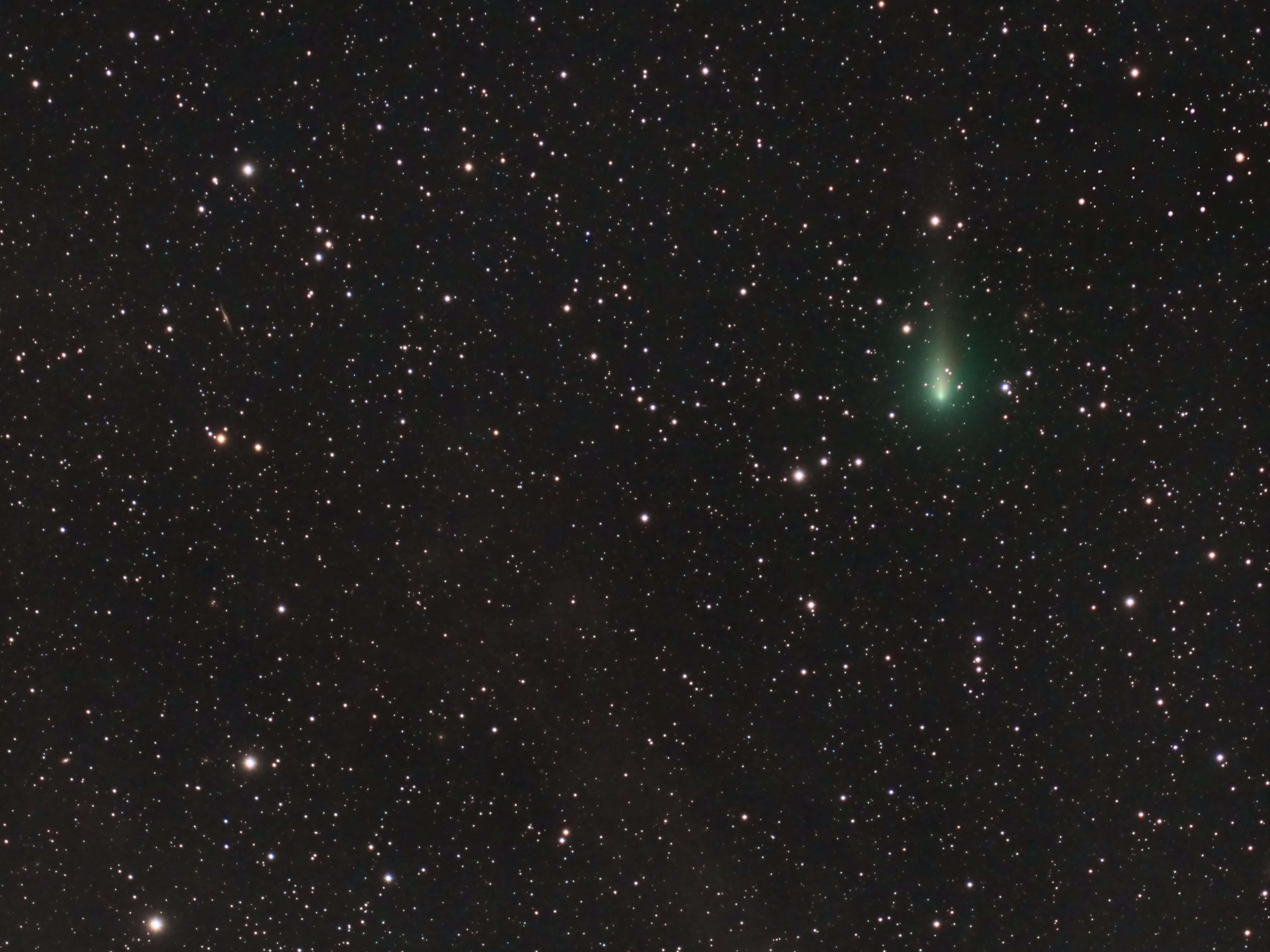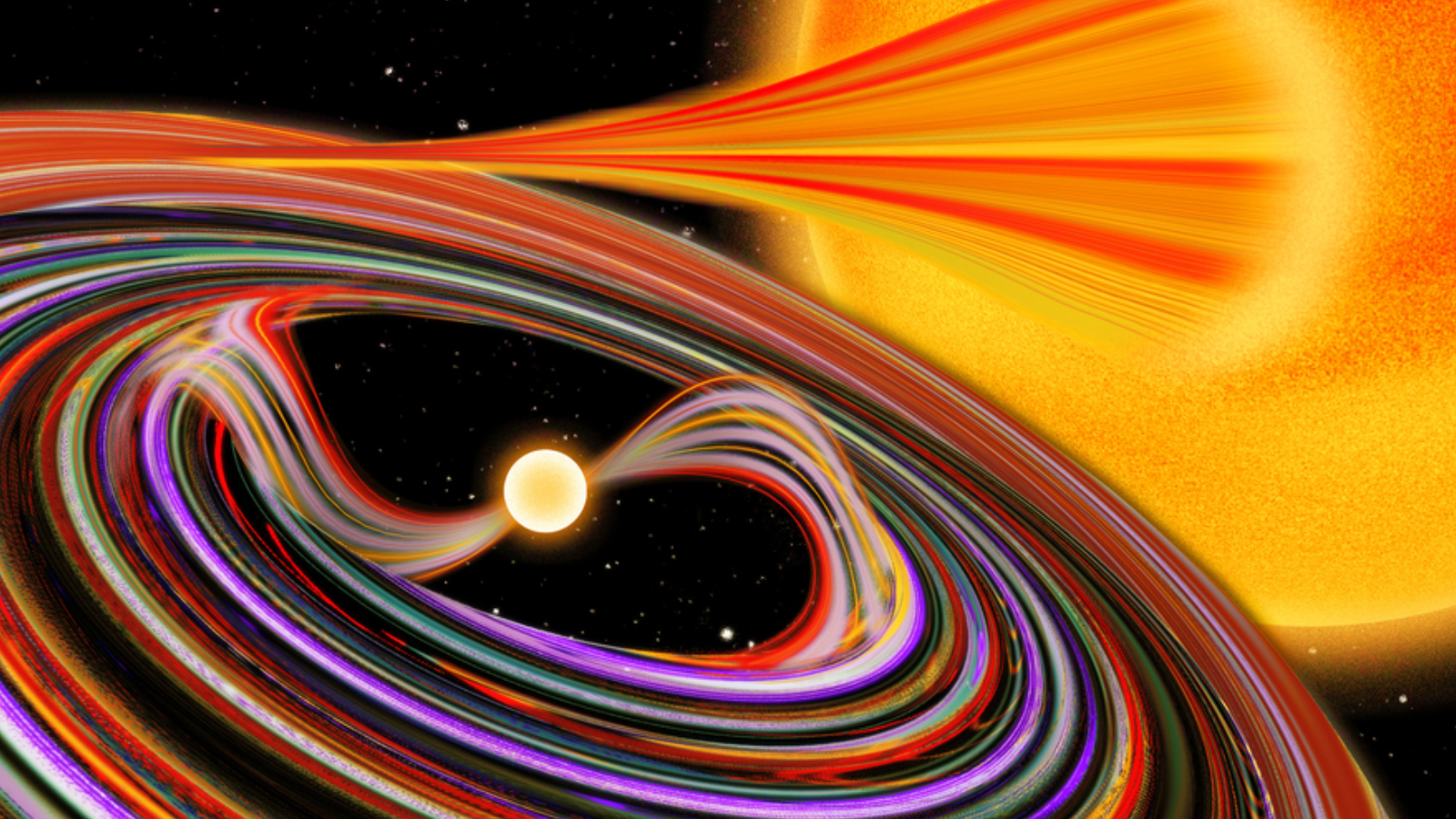Comet Atlas is falling apart, new photos confirm

It's official: Comet Atlas has broken apart.
Just a month ago, it looked like the icy wanderer, officially known as C/2019 Y4 Atlas, might put on a dazzling sky show around the time of its closest approach to the sun, or perihelion, which occurs on May 31.
But relatively lackluster behavior soon dimmed such hopes. And optimism surrounding the comet is now pretty much extinguished, for it's no longer in one piece.
Comet Atlas "has shattered both its and our hearts," astrophysicist Gianluca Masi, the founder and director of the Virtual Telescope Project in Italy, said in an emailed statement on Sunday (April 12). "Its nucleus disintegrated, and last night I could see three, possibly four main fragments."
Related: Photos: Spectacular comet views from Earth and space
Masi posted online some of the photos he took, which clearly show the comet's splintered core.
Atlas was discovered in late December 2019 by the Asteroid Terrestrial-impact Last Alert System (ATLAS) in Hawaii, which explains the object's name.
Breaking space news, the latest updates on rocket launches, skywatching events and more!
From its detection date through mid-March, Comet Atlas ramped up dramatically, increasing in brightness by a factor of 27,500, according to Space.com skywatching columnist Joe Rao. As a result, professional and amateur astronomers alike began buzzing about its potential, some even daring to dream that Atlas might become the next great comet to brighten Earth's night skies.
But Atlas slammed on the brightness brakes on March 17, and it's now pretty clear why that happened.
Such breakups are common for comets, which spend most of their lives in the frigid depths of the outer solar system and court danger whenever they get close to the sun. Indeed, Atlas itself may be the result of a previous fragmentation event; comet expert John Bortle told Rao that Atlas may be a chunk that broke off the famous comet of 1844 (which is officially designated C/1844 Y1).
Whatever Atlas' past may be, its future will not fulfill our skywatching dreams. But the next great comet is out there somewhere, and it will eventually make an appearance.
Editor's note: If you have an amazing comet photo you'd like to share for a possible story or image gallery, you can send images and comments to spacephotos@futurenet.com.
- The greatest comet close encounters of all time
- Photos: Spectacular comet views from Earth and space
- Living on a comet: 'Dirty snowball' facts explained (infographic)
Mike Wall is the author of "Out There" (Grand Central Publishing, 2018; illustrated by Karl Tate), a book about the search for alien life. Follow him on Twitter @michaeldwall. Follow us on Twitter @Spacedotcom or Facebook.
OFFER: Save 45% on 'All About Space' 'How it Works' and 'All About History'!
<p>For a limited time, you can take out a digital subscription to any of <a href="https://www.space.com/your-favorite-magazines-space-science-deal-discount.html" target="_blank">our best-selling science magazines for just $2.38 per month, or 45% off the standard price for the first three months.
Michael Wall is a Senior Space Writer with Space.com and joined the team in 2010. He primarily covers exoplanets, spaceflight and military space, but has been known to dabble in the space art beat. His book about the search for alien life, "Out There," was published on Nov. 13, 2018. Before becoming a science writer, Michael worked as a herpetologist and wildlife biologist. He has a Ph.D. in evolutionary biology from the University of Sydney, Australia, a bachelor's degree from the University of Arizona, and a graduate certificate in science writing from the University of California, Santa Cruz. To find out what his latest project is, you can follow Michael on Twitter.



